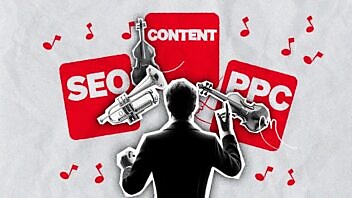This is one of a series of blogs about the changing B2B Go-To-Market landscape. You can check out the others in the series at the bottom of this piece.
The other day, I had the privilege of sitting down with Jon Miller, founder CEO of Marketo and Engagio and most recently CMO at B2B Go-to-Market powerhouse Demandbase. Tens of thousands of marketers in B2B tech firms have based their go-to-market strategy (and careers) on his principles. His ideas and the tech platforms he designed made marketing accountable for the first time, turning us from snowflakes into data dynamos with a seat at the top table. (As a disclaimer, Jon is a serial Velocity client, someone we’ve had a relationship with since 2009 when we supported him back in the day in producing the iconic Definitive Guide series for Marketo.)
SW: Hi Jon. You talk about how the old B2B playbook just doesn’t work anymore. What are the main symptoms of that? What are you seeing?
JM: Nearly every CMO is struggling to grow pipeline with budgets that are static at best. If the win rates aren’t changing and the pipeline goals are fair, then the way we’ve been trying to achieve them is the thing that’s broken.
SW: You cite buyer indifference as the main reason the B2B playbook is in a mess, but haven’t buyers always had that indifference and resistance to marketing?
JM: In 2006 when the inbound revolution started, buyers were genuinely excited by content that delivered educational, insightful information that was often entertaining. Their thought was: ‘this stuff is useful, valuable and free and all I have to do is give my email address. And then every month I get an email with something good. Where do I sign?’
Consistently great content will always encourage prospects to sign up, but today there’s just too much stuff, most of which doesn’t hit that higher quality bar. Buyers are allergic to our tricks and, candidly, they hate it when they download something and, ten minutes later, an SDR is on the phone. Buyers are tired of the Cold Calling 2.0 approach pioneered by Aaron Ross at Predictable Revenue.
As a result, buyers aren’t filling out forms and they’re doing their research anonymously and off our websites, making core concepts of the traditional B2B playbook, including lead nurturing and scoring powered by marketing automation, less and less effective.
(Note: Ross was an early employee at Salesforce where he built the enterprise sales team and process. Cold Calling 2.0 helped increase Salesfore’s recurring revenue by $100m and underpins their enterprise growth today (you can read about his approach in the book Predictable Revenue).
SW: You’ve been talking about the fact that the traditional playbook over-rotates on highly measurable demand gen tactics at the expense of building brand and reputation, and advising that companies should invest 40% of marketing budgets on brand as part of the new B2B playbook. If the average marketing budget for B2B is 8% of revenue, that’s a tidy sum. At Velocity, we’ve been beating that drum for a while, but why do you think brand has been so neglected?
JM: Many CMOs historically don’t spend anything directly on brand. Mainly because results are hard to measure or maybe actually unmeasurable. Even if they do pay off, it’ll be over time; and in an uncertain world where budgets and pipelines are being scrutinized, it’s hard for CMOs to lose the MQL mindset that they adopted all those years ago. Accountability is hard-wired into B2B marketer’s brains today, so anyone who comes along and suggests investments that are hard to measure, that are focussed on building awareness and trust with buyers who aren’t ready to buy and that will only pay off over time, is likely to get short shrift.
The first thing to say is that we need to adopt a broader definition of brand. Brand isn’t your logo and colors. It’s what people think and feel about you when you’re not in the room; it’s what Ze Frank called the ‘emotional aftertaste’ conjured up by a series of experiences with your company. It’s about the reptilian brain, not the logical brain.
It doesn’t have to mean traditional advertising (though that can help). One strategy is for companies to build, engage and convert ‘owned’ audiences. Marketing has become obsessed with converting the 5% of the target audience that is in-market to buy and has neglected the other 95% that’s just not ready to buy yet but who are still interested. Anthony Kennada at AudiencePlus has been a thought leader and practitioner of taking back control of your pipeline by owning your own audience. His team has shifted the focus away from simply automating go to market via email and digital advertising to monetizing engagement of sweet spot prospects.
SW: At the dawn of accountable marketing we talked a lot about how owning your own customer data and building communities around thought leadership was a transformational moment. Did we forget about that?
JM: Audience building is hard! And to do it we have to get marketers to stop thinking their jobs are to run gumball machines where money goes in for campaigns and leads automatically come out. We have to get comfortable with campaigns that don’t always have a hard CTA. After all, it’s a cold reality that the vast majority of our CTA-focussed ads don’t actually work or work so pitifully badly that there’s no ROI worth the mention. Even though the evidence is there that automating demand gen powered by so called intent is struggling, getting marketers to embrace a new brand-centric framework will take a significant mindshift.
SW: What about third-party intent?
JM: Well it’s worth reinforcing that only about 5% of your prospects are ready to buy at any one time. As people stopped filling in forms, we lost a lot of first party intent data. So a lot of companies looked to the third-party intent companies like Bombora, Demandbase, or 6sense. It was a smart idea. Because people couldn’t track what prospects were doing on their websites, the focus was on identifying what company they were from and what they were reading on the open web. It makes sense, but that activity is just an ingredient in a complex recipe. If a randomly selected company has a 5% chance of being in-market, third party intent tools might take that to 15%. But to a sales agent that still means five out of six companies weren’t hot or even very good. We have to be careful how we present intent data — it’s a clue to intent, not the answer. To work it needs to be combined with other ingredients. One of the best ways to get clear, actionable prospect data is by getting our audience to engage with and subscribe to our stuff.
SW: That implies driving prospect engagement up. Does it mean new metrics?
JM: Being able to understand engagement feels like it’s meaningful, but it’s much more complex to measure engagement. Getting the right insight is tough. At Engagio we used to use time as a proxy for engagement: before people spend money with you they nearly always spend time with you. But people can like your stuff and still be not ready to buy. Getting close to engagement metrics means breaking down your prospect audience into segments and then asking how accounts in each segment are moving through the buying journey. Which are showing intent, how many actually came to your site, how many show signs of buying anything, and are those signs consistent across prospects. Finding out who is engaging and who is not is what matters.
And remember engagement is still a “boiler room” metric for the C-Suite. Just like a ship’s captain doesn’t care about the temperature in the boiler room, CEO’s don’t care about engagement if they can’t link it to revenue. But it feels as if there’s a movement starting that could change the way engagement insight is measured and used. (Editor’s note: Velocity’s custom metrics try to address this issue – both in terms of building an audience and measuring engagement. Find out more about the 9 new performance marketing metrics to measure how you’re impacting revenue.)
SW: Lots of our clients over the years have dismissed long-form content, but we’ve used it a lot and it usually signals engagement when prospects download and read it. You’re famous for producing some of the longest form content of all time. Velocity supported you at Marketo and Engagio with some 150-page monsters that worked well. Do you think it’s a viable signal for engagement?
JM: I don’t think long-form content works as well these days. When I was at Marketo, the Definitive Guide to Marketing Automation was downloaded over 10,000 times in a single week. At Demandbase it took over a year for our best long form piece to reach 10,000. Books still have value, but buyers have moved on. I tend to think about content like the New York Times thinks about content. They make a bunch of content freely available without a form and their readers have a membership that allows them to browse, read and react whenever they want. I believe subscription is the new opt-in. Companies need to be prepared to produce more content across a broader area that will pique more than just random downloads. That content needs to be stuff they want to swim around in and inhabit because it’s relevant, useful, educational and entertaining. It’s true the quality threshold is higher, but so is the quantity bar.
SW: You’ve been pretty scathing about marketing attribution recently. Why?
JM: I just don’t think attribution data are all that accurate. We know that 7-10 people are usually involved across the buying cycle in every B2B sale. Each person has dozens of interactions with people, content, other customers, and friends before engaging. Many happen off your site and in closed or offline communities. You can’t capture those interactions. And an obsession with attribution undermines the teamwork across the sales and marketing teams that’s required in the new GTM world. It’s much better to focus on whether the “go-to-market team” wins together.
SW: The pendulum swing between brand and performance has always gone back and forth. Sounds like you think brand is back?
JM: I think we over-rotated on performance and I’m partly responsible for that. I got up on stage a lot and told CMOs and their teams they could earn a seat at the revenue table by connecting every lead to a deal. The impact of performance marketing has been extraordinary. We brought science and data into marketing and they did earn a seat at the table. But that math and attribution science just doesn’t work as well anymore.
The danger here is that the CMO loses the hard-won credibility that comes from that math as we shift to a less measurable engagement driven world. The best CMOs will be the ones that can talk credibly to the C-suite and the board about changing buyers and why brand and the new metrics are critical.
SW: Thanks Jon. Great stuff. Here’s a final question: you left Demandbase recently. To do what?
JM: I’m not really ready to talk in detail about that. But it won’t be a surprise to anyone that I’m planning to start a new software company that uses AI to serve the changing GTM world.

Enjoyed this article?
Take part in the discussion





















Comments
There are no comments yet for this post. Why not be the first?